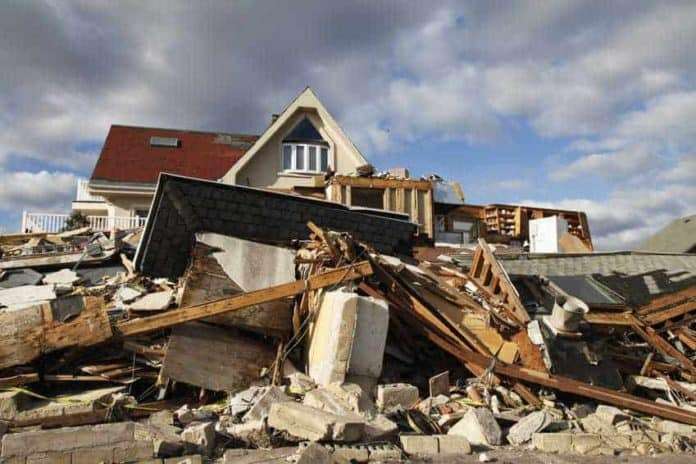Those who live in hurricane-prone areas can do certain things to protect their property. A metal roof, for instance, will minimize damage due to its 140-mph wind rating. But in some situations, those tactics simply don’t work. After hurricanes roared through Texas, Florida, and Puerto Rico, many residents were left with uninhabitable homes — upon which they still needed to make mortgage payments. Now, many of these Americans will have to add foreclosure to their list of post-hurricane worries.
Back in 2016, there were 956,864 foreclosure filings and 203,108 home repossessions in the United States. In the wake of Hurricanes Harvey, Irma, and Maria, approximately 4.8 million mortgaged properties were impacted. According to Black Knight, a financial data firm, these properties resulted in nearly $746 billion in unpaid principal balances. In September alone, the number of mortgage loans that were more than 30 days past due increased by 48% in areas impacted by Irma and by 67% in areas impacted by Harvey. Before the storms hit, Texas and Florida ranked 20th and 22nd, respectively, among states with non-current mortgage rates. After, they took third and fifth place.
While many lenders do offer grace periods in situations like these, those periods don’t last forever. Fannie Mae and Freddie Mac, two federal government-backed mortgage lenders, put a three-month suspension of foreclosure sales, late fees, and credit score reporting in place. They also allowed mortgage services to put forbearance plans in place that could delay payments for up to a year’s time. Still, these efforts don’t solve everything. Usually, residents will have to pay rent elsewhere during the time they can’t live in their damaged properties, making their financial situations even more dire.
Even worse, postponed payments are often due all at once after the grace period ends. And many mortgage servicers won’t release insurance payouts until the homeowner has a contractor lined up to perform repairs. Between the nationwide labor shortage and huge demand for these services, it’s next to impossible for homeowners to afford or access the repairs they need. Consumer advocates are concerned that mass delinquencies turn neighborhoods into ghost towns.
Americans have experienced this before. When Hurricane Sandy hit New Jersey five years ago, countless families had to drain their finances just to make repairs and pay for temporary housing while keeping up with their mortgage. Housing advocates finally got some relief when Governor Chris Christie signed a bill that allowed mortgage payment delays for some homeowners. But those homeowners had to already have a stellar mortgage record, have remaining Sandy-related construction or elevation work on their property, and have received rental assistance in the past from the Federal Emergency Management Agency or other assistance programs. More than one thousand people applied, but only 476 were considered eligible for the program.
Now, those impacted by these recent hurricanes may have to rely on consumer advocacy groups to fight on their behalf. One such group recently sent a letter to other government-backed agencies to request that certain homeowners be allowed to pause their mortgage payments for up to two years and be given $10,000 to make urgent repairs. Whether or not the efforts will be successful remains to be seen.


